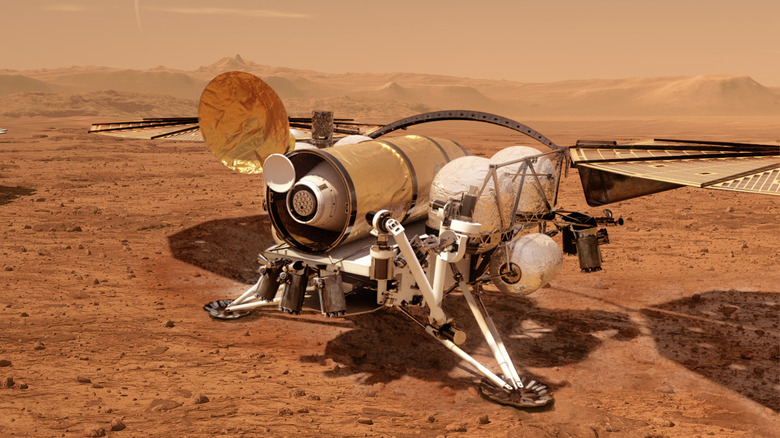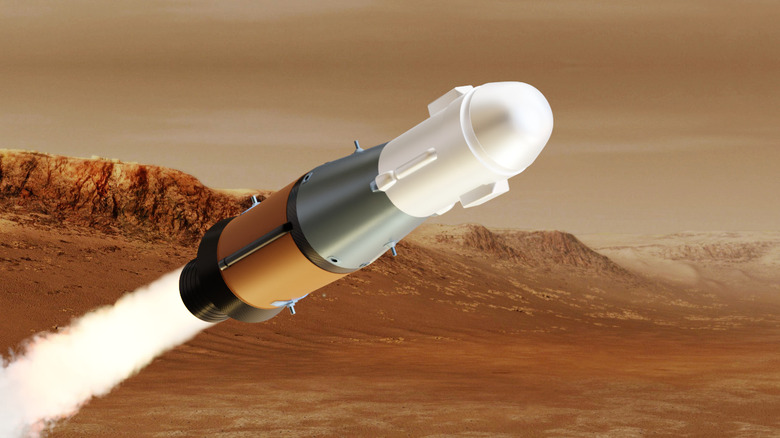NASA Has A New Plan For Getting Mars Samples Back To Earth
NASA has released its budget request for the year 2023, laying out its plans for the next few years of space exploration –- including updates to its plans to bring samples back from Mars to Earth in a project called Mars Sample Return (via space.com). Previously the plan to get a sample back from Mars had been to first use the NASA's Perseverance rover to collect samples of soil and rocks and seal them in tubes, which will be left on the planet's surface. The rover has so far collected a number of such samples successfully. A future mission would then employ a lander to carry both a European-built rover and an ascent vehicle to Mars. It would land on the surface and send the small rover, called a fetch rover, to collect up these samples and bring them to the ascent vehicle and load them inside. This ascent vehicle would launch from Mars — being the first launch from another planet ever attempted — and rendezvous with an orbiting spacecraft, passing the samples on. Then this spacecraft would head back to Earth to land the samples here (via Digital Trends).
Now, though, NASA has tweaked that plan somewhat. Instead of one lander taking both the fetch rover and the ascent vehicle to the surface, the new plan is for two separate landers for each element. NASA says this is necessary due to their analysis of the mass requirements for the lander.
No more Mars Ice Mapper
NASA's new plan means that the sample return mission will be pushed back to a later date to make time to develop and build both landers. The original aim had been to launch the lander in 2026, but now NASA says it will be necessary to push the launch of the landers until 2028, with samples to be returned to Earth by 2033. The agency also says that using two landers will improve the probability that the mission succeeds. As you can imagine, requiring the development of a second lander will require more funding as well, so NASA has requested further funding for the Mars Sample Return project in its budget. To make up some of the difference, the agency will delay the launch of its asteroid-spotting project, the NEO Surveyor, for two years.
NASA is also pulling funding from the Mars Ice Mapper to spend it on Mars Sample Return instead. "Due to the need to fund higher priorities, including to cover cost growth expected from the Mars Sample Return mission, the budget terminates NASA financial support for the Mars Ice Mapper, which is still in pre-formulation with roles being discussed with international partners," the budget report reads in part. "NASA had not planned on making hardware contributions to this mission but had discussed the possibility of taking on mission management activities."
The idea of the Ice Mapper mission had been to support the Canadian, Italian, and Japanese space agencies in building and launching a Mars orbiter. The orbiter would use two types of radar to look beneath the surface of Mars to determine how deep water ice is present there, in order to pave the way for future crewed missions to make use of these resources (via Digital Trends). With NASA no longer participating in this mission, it seems unlikely that it will go ahead now.

